World War I, Mass Death, and the Birth of the Modern US Soldier
Lexington Studies in Contemporary Rhetoric
Series Editor: Gary C. Woodward, The College of New Jersey
This series provides thought-provoking and accessible analyses of the uses of language and media from the middle of the twentieth century to the present. In particular, this series examines how modern discourse is constructed and communicated in our distracted times, focusing on specific settings such as health communication, crisis communication, changing norms of interpersonal exchange, political communication beyond the presidency, etiquettes of communication in the digital age, celebrity as a rhetorical form, changing norms in reality and narrative television, and altered patterns of address in computer-mediated discussion. These books will provide depth and clarity about discourse more familiar than understood.
Recent Titles in This Series
World War I, Mass Death, and the Birth of the Modern US Soldier: A Rhetorical History
By David W. Seitz
US Public Memory, Rhetoric, and the National Mall
Edited by Roger C. Aden
Rhetoric of Femininity: Female Body Image, Media, and Gender Role Stress/Conflict
By Donnalyn Pompper
The Rhetorical Invention of Americas National Security State
By Marouf Hasian Jr., Sean Lawson, and Megan D. McFarlane
World War I, Mass Death, and the Birth of the Modern US Soldier
A Rhetorical History
David W. Seitz
LEXINGTON BOOKS
Lanham Boulder New York London
Published by Lexington Books
An imprint of The Rowman & Littlefield Publishing Group, Inc.
4501 Forbes Boulevard, Suite 200, Lanham, Maryland 20706
www.rowman.com
Unit A, Whitacre Mews, 26-34 Stannary Street, London SE11 4AB
Copyright 2018 The Rowman & Littlefield Publishing Group, Inc.
All rights reserved . No part of this book may be reproduced in any form or by any electronic or mechanical means, including information storage and retrieval systems, without written permission from the publisher, except by a reviewer who may quote passages in a review.
British Library Cataloguing in Publication Information Available
Library of Congress Cataloging-in-Publication Data
Names: Seitz, David W., 1980- author.
Title: World War I, mass death, and the birth of the modern US soldier : a rhetorical history / David W. Seitz.
Description: Lanham, MD : Lexington Books, [2018] | Includes bibliographical references and index.
Identifiers: LCCN 2018016791 (print) | LCCN 2018024702 (ebook) | ISBN 9781498546881 (electronic) | ISBN 9781498546874 (cloth : alk. paper)
Subjects: LCSH: World War, 1914-1918Social aspectsUnited States. | SoldiersUnited StatesHistory20th century. | War casualtiesHistory20th century. | World War, 1914-1918Psychological aspects. | National characteristics, American. | Collective memoryUnited States. | MemorializationUnited StatesHistory20th century. | Reconstruction (1914-1939)United States. | Sociology, MilitaryUnited States.
Classification: LCC D524.7.U6 (ebook) | LCC D524.7.U6 S45 2018 (print) | DDC 340.3/73dc23
LC record available at https://lccn.loc.gov/2018016791
 The paper used in this publication meets the minimum requirements of American National Standard for Information SciencesPermanence of Paper for Printed Library Materials, ANSI/NISO Z39.48-1992.
The paper used in this publication meets the minimum requirements of American National Standard for Information SciencesPermanence of Paper for Printed Library Materials, ANSI/NISO Z39.48-1992.
Printed in the United States of America
Contents
I wish to extend my deepest gratitude to Nicolette Amstutz, Jessica Thwaite, and everyone at Lexington Books for their patience, guidance, and support over the past few years.
This book is dedicated to my students, colleagues, friends, and family, but especially Adrienne, Finn, and Quaide.
The political, social, and material transformations unleashed by World War I (19141918) revealed what Celia Malone Kingsbury has termed the peculiar sanity of waran illogical scheme of contradictions, mass illusions, paranoia and jingoisms, superimposed upon the mass destruction of human bodies, minds, and spirits. Following the Armistice, the disjunction between the wartime perceptions of combatant nations populations with the reality of the wars effects could no longer be satisfactorily accounted for by the vocabularies of religion, patriotism, militaristic gallantry, technology, nature, or political affiliation, precisely because such vocabularies had helped produce and prolong this seemingly mad international bloodletting. In short, the Great War produced a crisis of speech: traditional rhetorics that had been adequate and convincing before and during the war no longer were.
In the United States, the essential tasks of memorializing fallen soldiers, justifying soldierly death, and assuaging the personal and often gendered suffering of next of kin were highly problematic. a crucial moment of exigence regarding the meaning of soldierly death, ripe for rhetorical invention.
Drawing upon more than a decade of historical, archival, ethnographic, interpretive, and scholarly research, Contextualizing the postwar generative crisis within the broader American experience of World War I (both domestically and abroad) and contemporary politics and cultural practices, this diachronic study shows how collisions between divergent social forces (e.g., grieving families, famous military leaders, veterans groups, immigrant communities, politicians harboring imperial designs, arms manufacturers, disillusioned artists and writers, foreign dignitaries) within public and private spheres wrought the generic and dubious yet rhetorically powerful image of the modern U.S. soldier and his attending virtues, motives, and willingness to fight and die across the globe for Americans and non-Americans alike.
The conclusion of World War I may seem like a natural starting point for this rhetorical history.of a necessarily ambiguous yet potent ideograph (the modern U.S. soldier) that could simultaneously: absorb anxieties over the federal governments newfound reach into the lives of private citizens; symbolically re-link the bodies of U.S. soldiers sacrificed on (and buried in ) foreign soil with the American homeland; epitomize the supposed unity, equality, and shared interests of a radically heterogeneous and stratified American polis; and, validate the nations marked transition from isolationism to interventionism. In other words, this book endeavors to provide a detailed genealogy of the iconic figure of the universal U.S. soldier that emerged and circulated during the postwar years.
From the outset, it is crucial to emphasize (if briefly) just how transformative and disorienting the American World War I experience was. On an international level, Americas participation in (and decisive impact on) World War I signaled (and confirmed) the nations emergence as a new, major global force (economically, politically, and militarily speaking) with which traditional Old World powers would henceforth have to contend. As British politician David Lloyd George told the international press on April 6, 1917 (the day after Congresss declaration of war): America has at one bound become a world-power in a sense she never was before.and the rhetorical contours and dimensions of the iconic, sacrificial U.S. soldier developed during and after World War I.
Written in the spirit of war-related cultural histories I greatly admire, such as Drew Gilpin Fausts This Republic of Suffering: Death and the American Civil War and Paul Fussells The Great War and Modern Memory , discovered in previously untapped historical and archival materials (e.g., rare wartime diaries kept by U.S. soldiers along the Western Front, correspondence between traumatized widows and the federal government regarding the burial of fallen soldiers, opinion-editorials on questions of citizenship and soldierly sacrifice in local African-American, German-American, and Suffragette newspapers and pamphlets, behind-the-scenes communiqus between individuals responsible for the design of permanent U.S. World War I cemeteries in Europe)publics and testimonies that directly influenced the rhetorical construction of the modern U.S. soldier still in currency today.

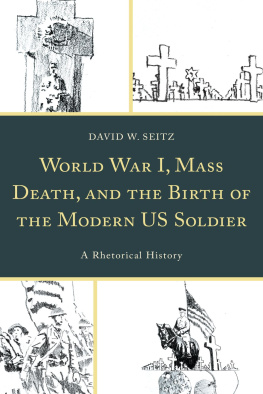


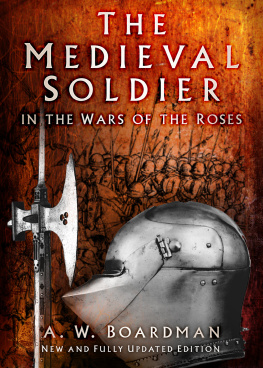
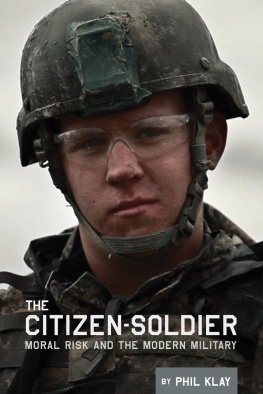

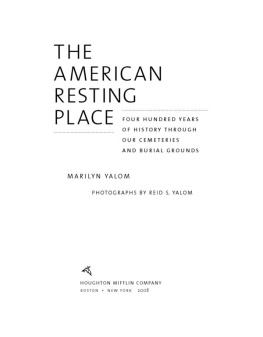
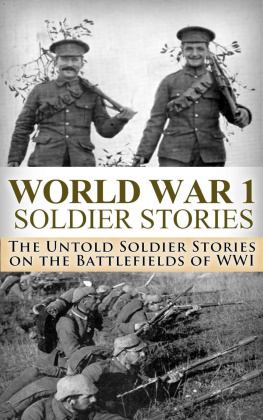

 The paper used in this publication meets the minimum requirements of American National Standard for Information SciencesPermanence of Paper for Printed Library Materials, ANSI/NISO Z39.48-1992.
The paper used in this publication meets the minimum requirements of American National Standard for Information SciencesPermanence of Paper for Printed Library Materials, ANSI/NISO Z39.48-1992.